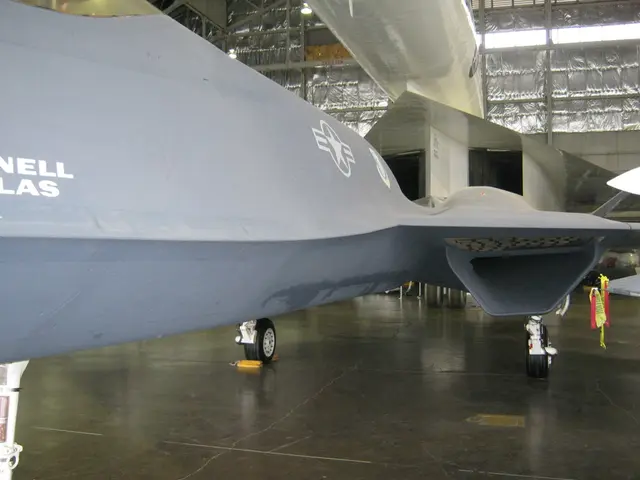major AI industry gap market estimated at $200 billion for competitors to catch up
In the digital landscape of today, a significant shift is underway, one that promises to revolutionise the way enterprises operate - the widespread adoption of Artificial Intelligence (AI). This transformation follows a familiar path, reminiscent of the flywheel model Apple perfected with the iPhone.
The age group of 25-34-year-olds, often dubbed the millennials, are playing a pivotal role in this transition. Their unique blend of tech fluency and professional responsibility makes them the natural bridge from experimental stages to enterprise deployment. This demographic, in fact, is the heaviest user of AI, with a rate of 65% adoption.
The world's leading tech giants are at the forefront of this AI revolution. Companies like Anthropic and Google are focusing on building foundational protocols for interoperable networks, while startups like Genow and Onsai are concentrating on scalable solutions and industry-specific applications. This focus is expected to drive the AI market from its current $3.7 billion in 2023 to over $100 billion by 2032.
The growth in AI adoption is also evident among older demographics. Even those aged 50 and above are adopting AI steadily, indicating a broad demographic reach for this technology.
Two of the most prominent examples of AI integration can be seen in Google and Amazon. Google AI is bundled into ads and Workspace, cross-subsidized by search revenue, while Amazon's Alexa is tied to Prime, subsidized by commerce.
However, it's important to note that AI has been a subject of hype for over 20 years, with many unfulfilled promises. The $200 billion market isn't about creating something new, but about finally delivering on two decades of broken promises in AI.
The turning point in AI is accuracy. Speech recognition, for instance, hovered around 75% accuracy in the 1990s, but by 2025, systems have reached 95%+ accuracy. This reliability has unlocked demand that has been building since the first wave of digital assistants.
Today, there are 8.4 billion voice assistants in use worldwide, a testament to the growing trust in AI. Customer service, transcription, and support automation have a market size of $150 billion, sectors where AI is making a significant impact.
Agentic AI, operating at a Compound Annual Growth Rate (CAGR) of 43.8%, is scaling into enterprise-grade workflows. OpenAI offers tiered access, ranging from free to $2,000/month, making it accessible to businesses of all sizes.
In conclusion, the adoption of AI follows a staged curve, mirroring the path to the $200 billion enterprise opportunity. It's not just about creating something new; it's about finally delivering on the promises made over the past two decades. The AI revolution is here, and it's set to transform the way enterprises operate.
Read also:
- Automotive Updates: Wolfspeed, NVIDIA, ABB, and Veritone in Spotlight
- Demonstrating Carbon Storage in Agricultural Forestry through Digital Monitoring and Verification
- Interview Questions for Erica Tandori, an Artist, Intellectual, and Educator at Monash University
- European Investment Bank Allocates €20 Million to Greek Food Technology Firm STIQ








